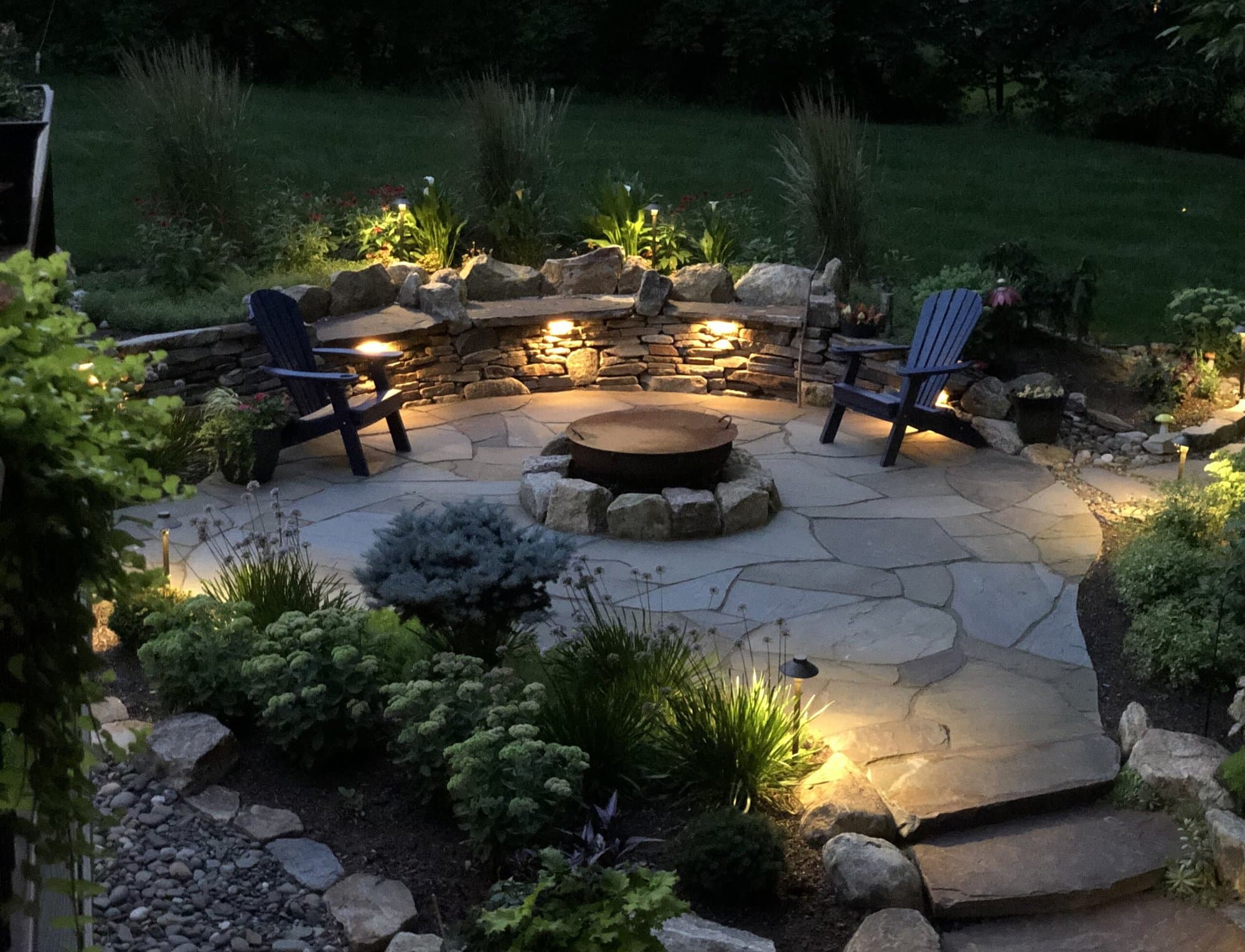Elevate Your Residential property's Visual With Sustainable Landscape Design Layouts and Eco-Friendly Practices

Advantages of Lasting Landscape Design
Executing lasting landscaping techniques not only conserves natural resources however likewise promotes biodiversity and enhances overall ecological health. By picking environment-friendly landscaping strategies, homeowner can enjoy a wide variety of advantages that extend beyond just visual allure. One considerable benefit is the decrease of water usage through making use of drought-resistant plants, rainfall yards, and efficient irrigation systems. This not only reduces utility costs yet also contributes to water preservation initiatives in the neighborhood.
Moreover, sustainable landscape design can enhance soil wellness by lessening making use of chemical fertilizers and chemicals, consequently creating a healthier environment for plant growth and advantageous soil organisms. This, consequently, enhances the overall resilience of the landscape to withstand ecological stress factors and environment modification influences - lawn cleanup Jacksonville. Additionally, lasting landscape design techniques can draw in varied wildlife, consisting of pollinators like butterflies and , promoting a more vibrant and balanced environment within the residential property
Incorporating Indigenous Plants
To build upon the benefits of sustainable landscape design, a strategic concentrate on including native plants can even more enhance ecological resilience and promote biodiversity within the landscape. Native plants are species that naturally happen in a certain area and have evolved to flourish in the local environment, soil problems, and community. By including native plants in landscape design layouts, property owners can reduce water use, minimize the demand for chemical pesticides and fertilizers, and sustain the regional wildlife population.
Including indigenous plants likewise helps in preserving the unique personality and identification of an area's vegetation. These plants typically need much less maintenance when established, making them a cost-effective and sustainable landscape design remedy over time. Furthermore, native plants can attract native pollinators like butterflies and , contributing to the total health and wellness of the community.
When selecting indigenous plants for landscaping projects, it is important to select species that are well-suited to the specific ecological problems of the website. Consulting with botanical yards or regional baby rooms can offer beneficial assistance on choosing the right native plants for a specific location. By incorporating native plants right into landscaping layouts, home owners can develop stunning, lasting outdoor spaces that profit both the community and the environment.
:max_bytes(150000):strip_icc()/2583801_toddd_60-1-c7bb52ede7254a38bb9cbe1978bc7db5.jpg)
Water Preservation Methods
Effective irrigation methods play a crucial function in sustainable landscape design methods, guaranteeing optimal water preservation initiatives in outdoor areas. Leak irrigation delivers water directly to the roots of plants, minimizing dissipation and drainage.
In enhancement to innovative irrigation approaches, xeriscaping is an additional water-saving landscape design strategy that focuses on making use of drought-resistant plants, mulch, and reliable watering to create a low-water landscape layout - bush removal Jacksonville. By picking native plants that are fit to the neighborhood environment and soil problems, building owners can lower the demand for too much watering, inevitably saving water and promoting a sustainable outside environment
Eco-Friendly Hardscaping Concepts
Enhancing outside rooms with environment-friendly hardscaping functions can contribute significantly to sustainable landscape design techniques. Opt right here for products like recovered wood, recycled concrete, or all-natural rock to minimize environmental influence when taking into consideration hardscaping aspects. These products not only include an unique aesthetic attract your outdoor room however likewise minimize the demand for brand-new resources removal.
Implementing absorptive paving options such as gravel or absorptive concrete can assist decrease water drainage and promote groundwater recharge. These alternatives permit rainwater to seep into the ground, protecting against erosion and reducing the problem on stormwater systems.
Incorporating native plants into hardscaping designs can further enhance eco-friendliness by supporting local wildlife and lowering the requirement for extreme watering or chemical therapies. By incorporating upright yards or environment-friendly walls, you can present extra vegetation into urban setups, boosting air high quality and biodiversity.
Incorporating energy-efficient lighting, such as solar-powered LEDs, right into hardscaping designs can lower electrical power usage and reduced your property's carbon footprint. Focusing on environmentally friendly hardscaping concepts not only boosts the charm of your exterior room but also shows a commitment to ecological stewardship.
Upkeep Tips for Sustainable Landscapes

Regularly prune plants to try this promote healthy development and avoid overgrowth that can lead to pest diseases or problems. Use organic plant foods to nourish the soil and plants without damaging chemicals that can seep into the setting.
Final Thought
Finally, lasting landscaping practices offer countless advantages for residential property owners, from boosting the visual appeal of the surroundings to advertising environmental conservation. By incorporating indigenous plants, implementing water preservation methods, and using green hardscaping concepts, residential property owners can produce beautiful landscapes that are additionally environmentally liable. With proper maintenance, sustainable landscapes can contribute and prosper to a much healthier ecological community for both people and wildlife.
Additionally, sustainable landscape design can improve dirt health and wellness by decreasing the use of chemical fertilizers and chemicals, thereby producing a healthier setting for plant development and beneficial dirt microorganisms.To construct upon the benefits website here of lasting landscaping, a tactical emphasis on incorporating native plants can better enhance eco-friendly strength and advertise biodiversity within the landscape. By consisting of indigenous plants in landscaping layouts, property proprietors can minimize water use, decrease the demand for chemical pesticides and fertilizers, and sustain the local wild animals populace.
These plants typically require less maintenance once established, making them a economical and sustainable landscape design option in the long run. By integrating native plants right into landscape design styles, building proprietors can develop gorgeous, sustainable outside rooms that profit both the setting and the area.